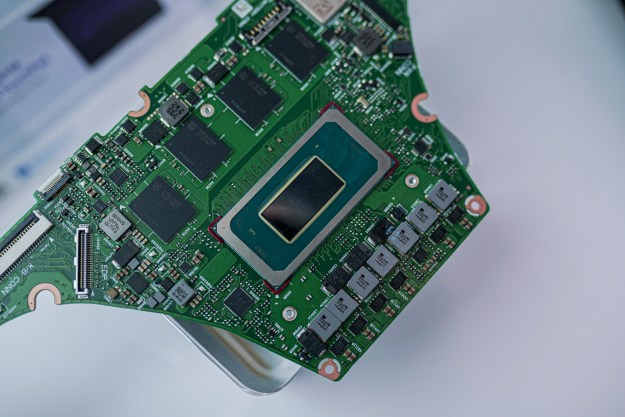Working with the basic material of computer chips, Intel Corp. researchers have constructed an all-silicon laser that could lead to computers one day harnessing light waves rather than electrical currents to shuttle data swiftly.
Today, lasers that power fast optical networks require exotic — and expensive — materials and are mainly used in vast communications networks. With everyday silicon, the capacity and efficiency of light waves could be used cheaply in much smaller environments.
As a result, the movement of data within computers would keep up with the ever-increasing speed of microprocessors, breaking through an increasingly problematic bottleneck that exists for users of complex programs, such as video editors, large businesses and governments.
Silicon lasers also could be mass produced, using the same equipment on which standard chips are made.
But silicon, the semiconductor that makes up computer memory and logic chips, has only recently been considered for use in photonics, or light-based technology — and it promises to revolutionize that field as it did electronics.
“Once you have silicon as an optical material, then you can take advantage of this enormous (silicon) infrastructure that exists around the world,” said Mario Paniccia, director of Intel’s photonics lab. “You can imagine starting to siliconize photonic devices, and maybe integrate photonics and electronics.”
The Intel research, co-authored by Paniccia and posted on the journal Nature’s Web site Wednesday, involved creating a laser with a single silicon chip. Like all lasers, it emitted a focused stream of light that ultimately could be manipulated to carry vast amounts of data at high speeds.
Laser beams are usually created by exciting atoms of polished crystal rods, gases or vapors, dyes or semiconductors with electricity or light. That boosts the atoms’ electrons to higher energy levels. When they fall back, photons, the basic element of light, are released. The photons are then bounced back and forth as in an echo chamber before they’re beamed out to create a concentrated light source.
With silicon, the situation is more complicated. Because of silicon’s crystalline makeup, energy from stimulated electrons is released as heat and vibration. To make a laser, researchers instead rely on a weak but precise scattering of photons called the Raman effect.
Silicon is a particularly good material for Raman lasers, which are already being used in long-haul telecommunications networks known as backbones. With silicon, the effect is 10,000 times stronger than in the glass fiber used in today’s Raman lasers, Paniccia said.
Last year, researchers at the University of California, Los Angeles demonstrated the first silicon-based Raman laser. It relied on a fiber loop for the echo chamber-like component that concentrates photons before emission, however.
The Intel research incorporated that into the single silicon chip, which could be more easily integrated into a computer, said Bahram Jalali, a UCLA electrical engineering professor.
“It’s the next natural step in the evolution of the silicon Raman laser,” he said.
Next in the increasingly competitive field is to produce a device that emits a continuous beam. That would be more useful for communications than the light pulses that have been generated so far, Paniccia said.
Ultimately, silicon-based lasers and other optical devices could be used to break through bottlenecks in the data paths between chips inside computers.
“Our goal is to drive this technology to a point where we actually converge communications and computing,” Paniccia said.
Editors' Recommendations
- What to do if your Intel CPU keeps crashing
- This HP laser printer deal cuts over 50% off the price for a limited time
- Apple M4 chip: price, performance, release date and more
- Everything we know about Lunar Lake, Intel’s big next-generation chips
- Intel Battlemage graphics cards: release date speculation, price, specs, and more



